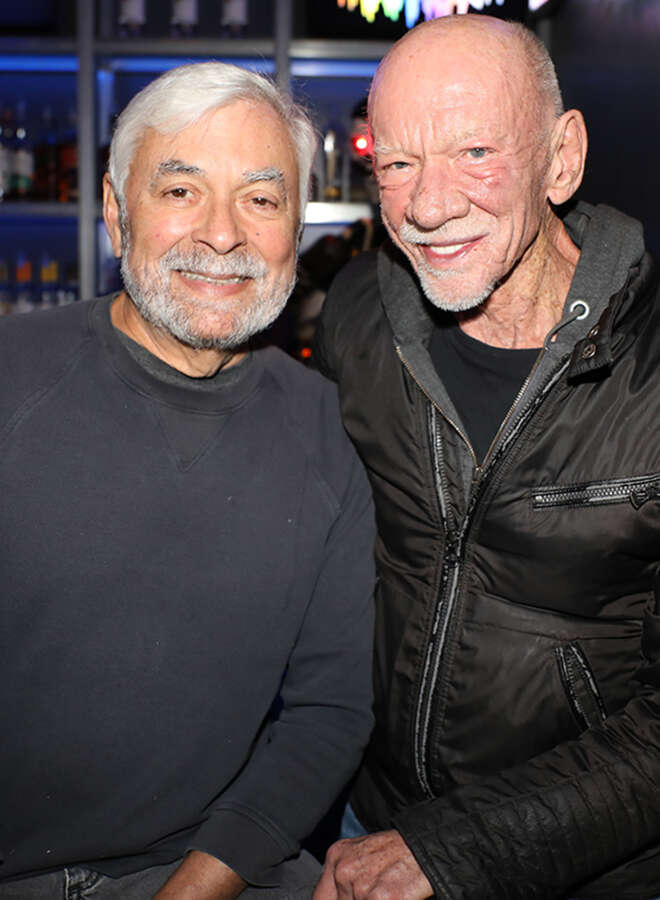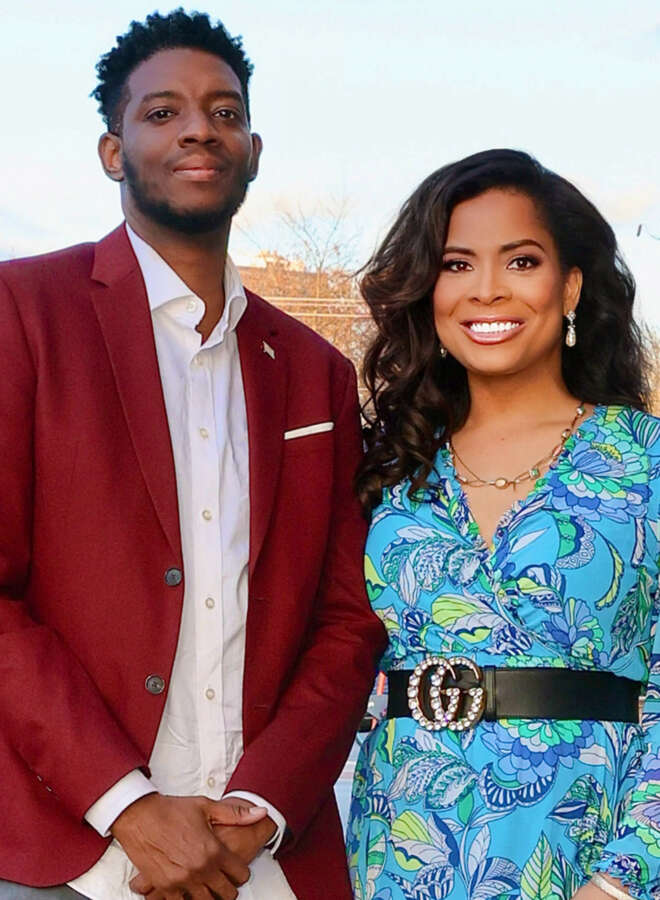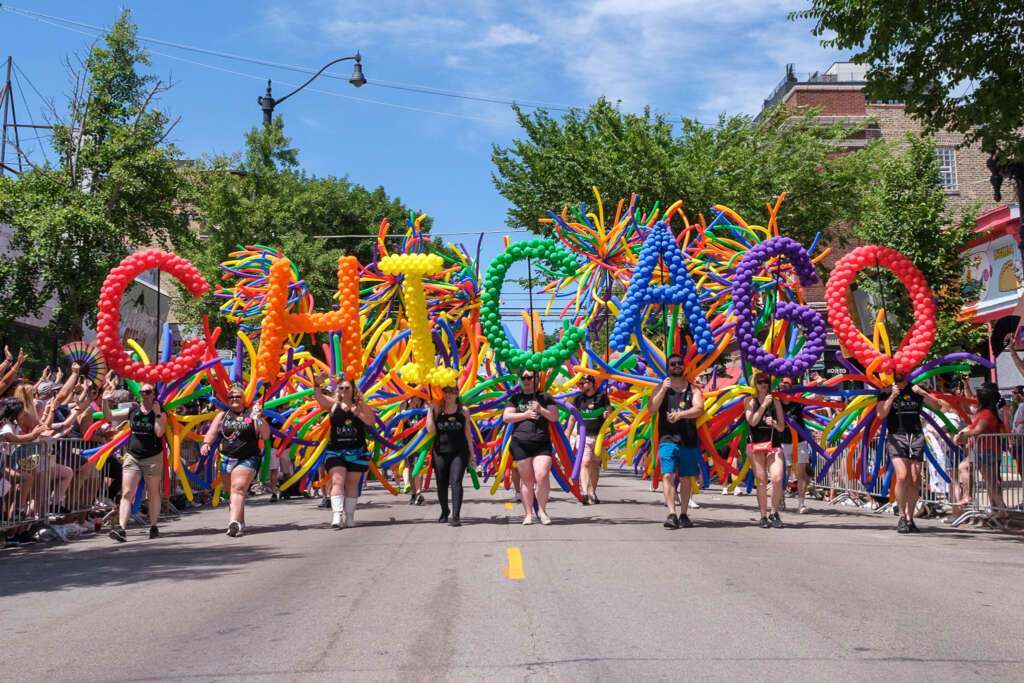Pride Parade
A tradition for more than 50 years, the iconic Chicago Pride Parade concludes the city’s month-long Pride celebrations with a procession through the Lakeview and Lincoln Park neighborhoods on the last Sunday of June each year.
The parade, organized by PRIDEChicago since 1974, has grown into one of the biggest Pride parades in the country and one of the world’s largest neighborhood parades.
Quick Tips
 Bring plenty of bottled water, sunscreen and a hat or other head covering, and dress lightly because parade day is usually hot and sunny.
Bring plenty of bottled water, sunscreen and a hat or other head covering, and dress lightly because parade day is usually hot and sunny.
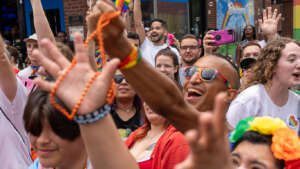 The area along N. Halsted fills in quickly, so arrive early. If you would like to avoid the crowds, it’s typically more open in Uptown where the parade begins.
The area along N. Halsted fills in quickly, so arrive early. If you would like to avoid the crowds, it’s typically more open in Uptown where the parade begins.
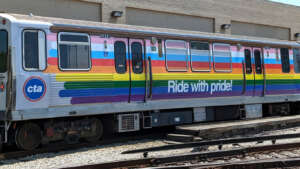 Do not drive, parking is basically non existent with street closures, and traffic will be congested. The CTA is best way to get around.
Do not drive, parking is basically non existent with street closures, and traffic will be congested. The CTA is best way to get around.
Frequently Asked Questions
Sunday, June 30th, 2024. The parade begins at 11 a.m. from W. Sheridan and N. Broadway, continues south along Broadway, then Halsted, east along Belmont to Broadway, then south to Diversey.

The parade features 150 registered entries. You’ll see celebratory floats, festively-outfitted vehicles, a variety of performance groups, a marching band, and many revelers on foot. Parade participants will represent community organizations, businesses, governmental officials and individual community members, all gathered to commemorate the history and celebrate the legacy of the fight for LGBTQ rights.
Parade day is usually hot and sunny so be prepared. Wear sunscreen and bring more to reapply if necessary. Bring plenty of water. You might want a hat or other head covering, as the best parade-viewing spots are not in the shade.
Whatever you want! You’ll see people in costume, decked out in rainbows, covered in glitter, and showing plenty of skin. Just keep in mind the sun and heat, and don’t forget sunscreen.
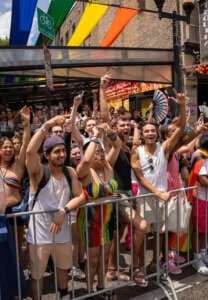 The busiest section for parade viewing is along the Northalsted entertainment corridor (Halsted between Belmont and Addison). If you want a spot up close, you’ll want to get there early. If you don’t, you might not have the best view of the parade itself, but you’ll be surrounded by energetic revelers.
The busiest section for parade viewing is along the Northalsted entertainment corridor (Halsted between Belmont and Addison). If you want a spot up close, you’ll want to get there early. If you don’t, you might not have the best view of the parade itself, but you’ll be surrounded by energetic revelers.
You may want to try other spots along the route for a better view of the parade. The section along Broadway from Belmont to Oakdale is a great place to settle in with your friends and watch the parade participants near the beginning of the route.
You won’t be able to see much from the parade assembly area north of Sheridan. That area is closed for staging.
The area along Diversey has been a great spot for those with limited mobility or other physical challenges. It is one of the lessor populated areas of the route, and it is where the accessible portable restrooms are located. Arrive early to secure the best spot.
Lots of people do! But keep in mind that the parade route is crowded, noisy, and full of colorful and glittery distractions. If you have a nervous pup, probably best to leave them safe at home.
Pets are not allowed in the parade.
Open alcohol containers are prohibited. Police and additional security teams will be enforcing this policy and fines can be up to $1000 dollars or more.
Street parking is limited and the area will be very crowded. If you drive, consider car-pooling, and be prepared to park far away and walk to the parade route.
Public transportation offers many options. The following CTA train stops are on or near the parade route:
- Red line: Wilson (Just north of the parade’s start point, you can walk back south and avoid the crowded stops), Sheridan (not fully accessible), Addison, Belmont (the most crowded stop!)
- Brown line: Belmont (the most crowded stop!), Wellington, Diversey (near the parade’s end point)
CTA buses may be re-routed on parade day. Visit transitchicago.com for route-planning tools and route updates.
Ride-share apps like Uber or Lyft may be an option, though keep in mind street traffic will likely be congested. Pick a drop-off location several blocks from the parade route and walk over to the parade route.
Parking is limited, and street closures will make driving right up to the route very difficult.
Public transportion is highly recommended. Visit transitchicago.com for route-planning tools and route updates.
Streets will be closed for both the assembly area and the parade route. The assembly area will close at 10:30 a.m., and includes:
- Broadway between Wilson and Clark
- Sunnyside between Broadway and Sheridan
- Sheridan between Wilson and Clark
- Montrose between Clark and Broadway
Street closures along the parade route will be rolling, beginning at 12 noon and proceeding south in advance of the parade. Parade route closures include:
- Broadway from Montrose to Halsted
- Halsted from Broadway to Belmont
- Belmont from Halsted to Broadway
- Broadway from Belmont to Diversey
- Diversey from Broadway to Cannon Drive
Pedestrian crossings will be set up at the following intersections:
- Montrose at Broadway
- Irving Park at Broadway
- Grace at Halsted
- Addison at Halsted
- Roscoe at Halsted
- Wellington at Broadway
- Aldine at Halsted
- Cornelia at Halsted
- Oakdale at Broadway
There will be portable restrooms located all along the parade route. Accessible restrooms for those who are physically challenged will be set up on the sidewalks around 600 W. Diversey.
First aid stations will be located at:
- 901 W. Addison St.
- 765 W. Roscoe St.
- 3165 N. Halsted St.
- 561 W. Surf St.
- 802 W. Roscoe St.
Cooling buses will be located at:
- Halsted, south of Belmont
- Addison, west of Halsted
- Belmont, east of Broadway
- Wilton, north of Belmont
- Buena, west of Broadway
Halsted, south of Belmont
Addison, west of Halsted
Belmont, east of Broadway
Wilton, north of Belmont
Buena, west of Broadway
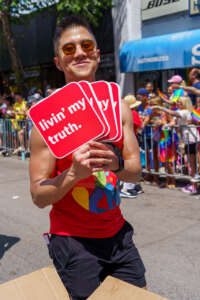
Some might! But keep in mind that participants are not supposed to throw things out to the crowd. Likewise, spectators should never throw items at the parade participants.
There will be barriers set up along the route separating the spectator area from the street. Spectators won’t be able to run into the street to retrieve goodies. If parade participants are handing out items, they will walk over to the spectator area to do so.
Accessibility
PRIDEChicago is committed to making the annual parade accessible for everyone, including seniors and those with limited mobility or other physical challenges. The area along Diversey (near Clark St.) is towards the end of the parade route and typically is less crowded than other streets, and it is where the accessible portable restrooms are set-up near 600 W. Diversey. Arrive early to secure the best spot.
Parade Route
The Chicago Pride Parade steps off from W. Sheridan and N. Broadway in the landmark LGBTQ+ neighborhood of Northalsted and will then travel the 20-block parade route south on Broadway; then south on Halsted; then east on Belmont; then south on Broadway; then east on Diversey to Cannon Drive.
Parade Facts
When Chicago Gay Liberation organized its first-ever march on Saturday, June 27, 1970, about 150 people marched from Washington Square Park, known as “Bughouse Square,” to the Daley Center, known as the Civic Center.
In 1977, attendance jumped from a few hundred to several thousand. The catalyst was a protest again Anita Bryant, an anti-gay activist, singer, and spokeswoman for the Florida Citrus Commission.
More and more people participated and watched as the years went on.
After attendance swelled in 2010 and 2011, with some estimating that 750,000 spectators flooded into the Northalsted neighborhood (commonly referred to as “Boystown”), the 2012 parade took a new, extended route designed for more accessibility. (It’s the same route used today.)
By 2015, the year the U.S. Supreme Court declared marriage equality throughout the country, an estimated 1 million people watched the Chicago Pride Parade proudly march down North Halsted Street in America’s first gay neighborhood.
The crowd estimates (provided by the City of Chicago) have remained at 1,000,000 since 2015.
The Gay and Lesbian Pride Parade continued to grow in the ’70s and ’80s, promoting visibility for the LGBTQ+ community and eventually gaining the support of many local politicians and businesses.
Today, one of the largest contingencies in the Chicago Pride Parade is the Chicago Council of Welcoming Churches.
Over 95% of the corporate entries in the parade are represented by the company’s LGBTQ+ Business Resource Group or Employee Resource Group.
All of Chicago’s major sports teams have appeared in the parade, including the Chicago Blackhawks, Chicago Cubs, Chicago Fire, Chicago Bulls, and Chicago White Sox.
In 2010, the Stanley Cup became the first major professional sports trophy ever to ride in a pride parade. Then-Blackhawks defenseman Brent Sopel brought the cup onto the Chicago Gay Hockey Association’s float as an honor to Brendan Burke, the late son of Toronto Maple Leafs general manager Brian Burke, who died in a car accident earlier that year two months after coming out.
PRIDEChicago has hosted numerous grand marshals from the world of sports, music, film, and TV.
Some of the grand marshals include: John Amaechi (2007), Eric Alva (2008), Billy Bean (2003), Alexandra Billings (2009), Orlando Cruz (2018), Wilson Cruz (2005), Lea Delaria (2017), Wade Davis (2013), Ty Herndon (2015), Greg Louganis (1999), Chuck Panozzo (2002), Monica Raymund (2016), Fernanda Rocha (2011), Will Sheridan (2014), George Takei (2006), Esera Tuaolo (2004), Evan Wolfson (2012), Chely Wright (2010), and many others.
“The richness of our communities, our cities, and our nation lies in recognizing and celebrating our diversity. That diversity is not only in our various ethnicity and cultures, but also in the diversity of our sexual orientations. We all contribute, each in our own way, to the strength, vitality, and the well being of our society,” Takei told GoPride.com prior to the parade.
In 2019, PRIDEChicago announced changes to the grand marshal selection. For the first time there was an Honorary Grand Marshal, plus a Youth Grand Marshal, several Legacy Grand Marshals and an Organizational Grand Marshal.
Chicago has long been a hub of LGBTQ+ life and culture and advocacy for equal rights.
Chicago Mayor Jane Byrne, the first woman elected mayor in Chicago, proclaimed the first Gay Pride Parade Day in the city in 1981.
After losing re-election, Byrne marched in the 1984 Chicago Pride Parade as a thank-you to the gay community for their support. Until then, only two local politicians had marched in the parade. Following Byrne, more and more elected officials began contacting PRIDEChicago to register, starting a political tradition that continues today.
In 1989, Richard M. Daley became the first sitting Chicago mayor to participate in the parade.
“I think it is important for me to take part in this parade to show my support of the gay community, which I believe has contributed to a better quality of life in this city,” Daley told the Chicago Sun-Times.
In 1997, Daley officially designated the section of North Halsted from Grace Street to Belmont as the first official gay neighborhood in the U.S.
The Chicago Pride Parade proudly marches down North Halsted Street to this day.
Chicago hosted the first Gay Pride Parade in the United States on Saturday, June 27, 1970.
And ever since, the social character of Chicago has been significantly shaped by the parade, which highlights the city’s openness and inclusivity.
Through the years the parade has addressed such issues as the HIV/AIDS crisis, same-sex marriage, transgender rights, homelessness among LGBTQ+ youth, and inequality.
In the early 1980s, the HIV/AIDS pandemic was beginning to emerge, and it had a significant impact on the gay community. The parade provided an invaluable venue for education and activism.
Today, with over a million in attendance each year, the parade boosts the local economy and continues to have a social impact, establishing Chicago as a city that values and celebrates diversity.
Learn about more of Chicago’s LGBTQ+ history in WTTW’s documentary Out & Proud in Chicago, narrated by Jane Lynch.
JOIN OUR EMAIL LIST
Sign up with your email address to receive news and updates.


